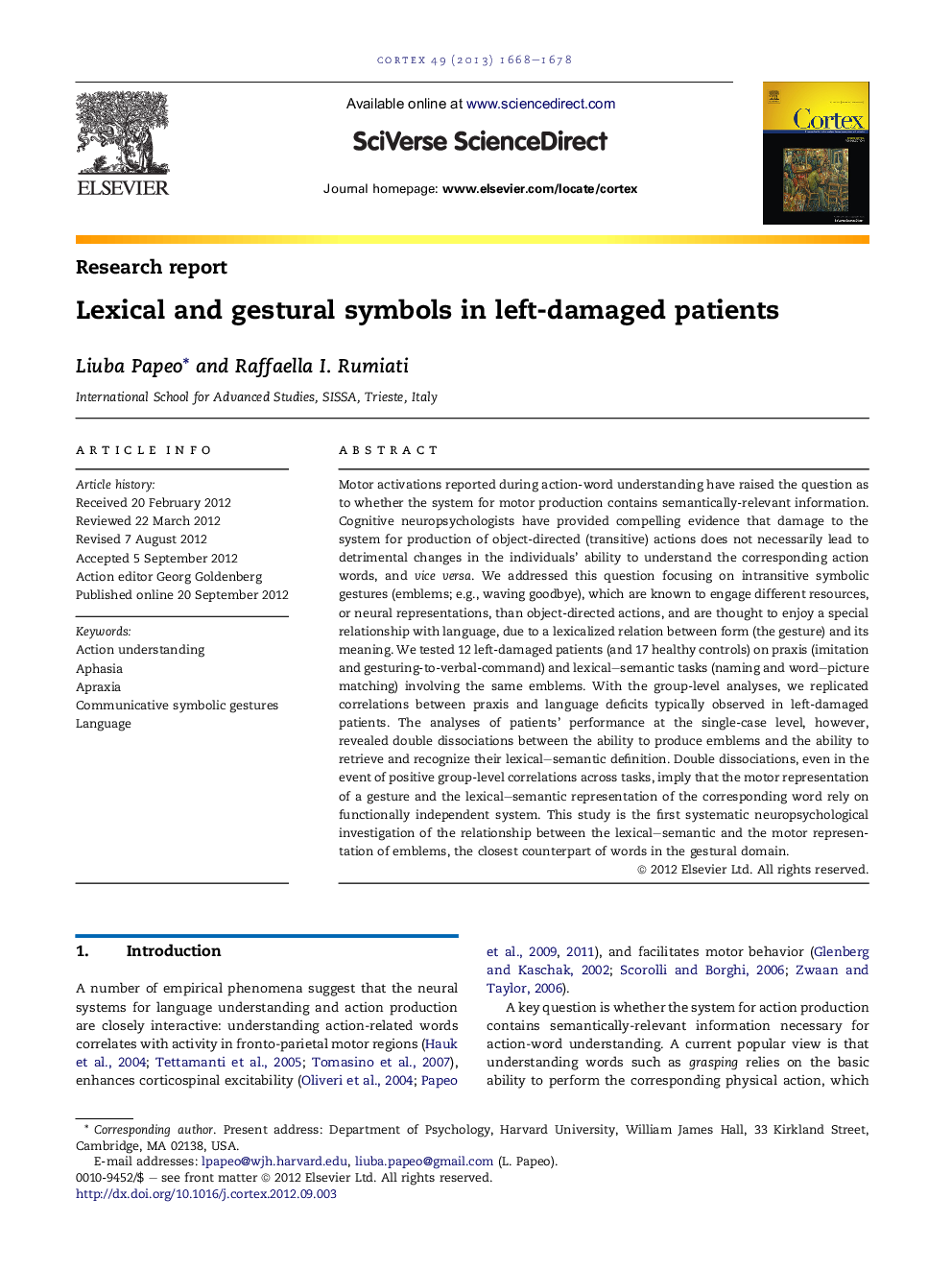| Article ID | Journal | Published Year | Pages | File Type |
|---|---|---|---|---|
| 10463120 | Cortex | 2013 | 11 Pages |
Abstract
Motor activations reported during action-word understanding have raised the question as to whether the system for motor production contains semantically-relevant information. Cognitive neuropsychologists have provided compelling evidence that damage to the system for production of object-directed (transitive) actions does not necessarily lead to detrimental changes in the individuals' ability to understand the corresponding action words, and vice versa. We addressed this question focusing on intransitive symbolic gestures (emblems; e.g., waving goodbye), which are known to engage different resources, or neural representations, than object-directed actions, and are thought to enjoy a special relationship with language, due to a lexicalized relation between form (the gesture) and its meaning. We tested 12 left-damaged patients (and 17 healthy controls) on praxis (imitation and gesturing-to-verbal-command) and lexical-semantic tasks (naming and word-picture matching) involving the same emblems. With the group-level analyses, we replicated correlations between praxis and language deficits typically observed in left-damaged patients. The analyses of patients' performance at the single-case level, however, revealed double dissociations between the ability to produce emblems and the ability to retrieve and recognize their lexical-semantic definition. Double dissociations, even in the event of positive group-level correlations across tasks, imply that the motor representation of a gesture and the lexical-semantic representation of the corresponding word rely on functionally independent system. This study is the first systematic neuropsychological investigation of the relationship between the lexical-semantic and the motor representation of emblems, the closest counterpart of words in the gestural domain.
Related Topics
Life Sciences
Neuroscience
Behavioral Neuroscience
Authors
Liuba Papeo, Raffaella I. Rumiati,
